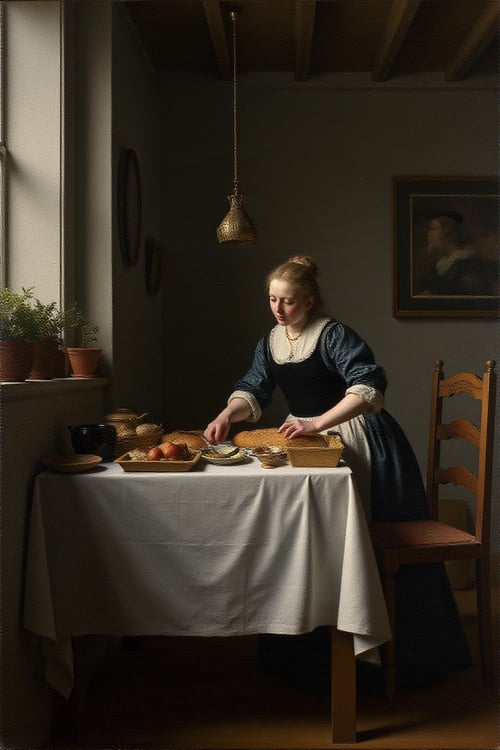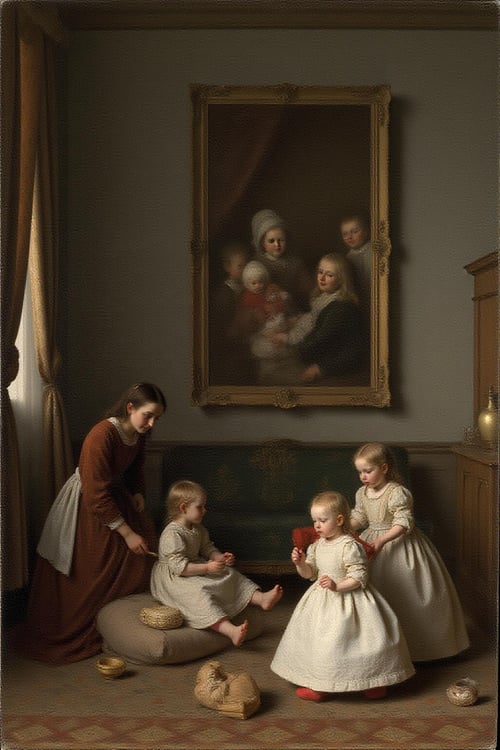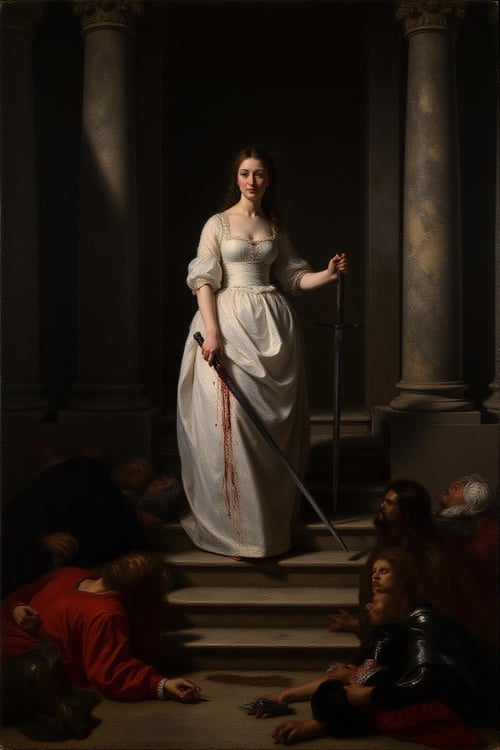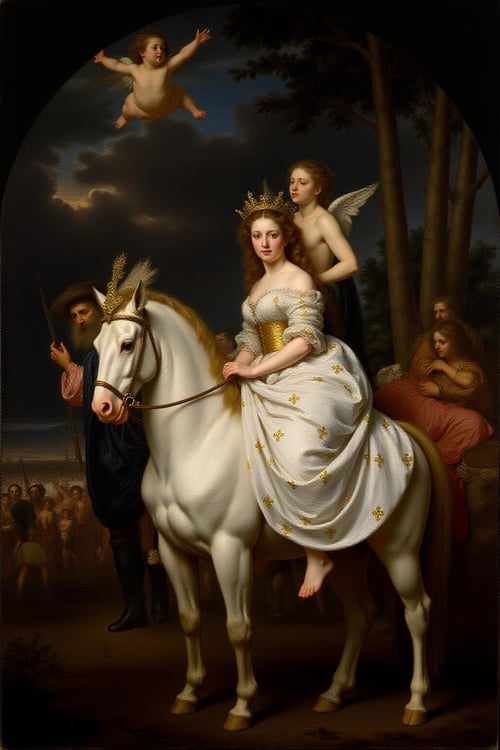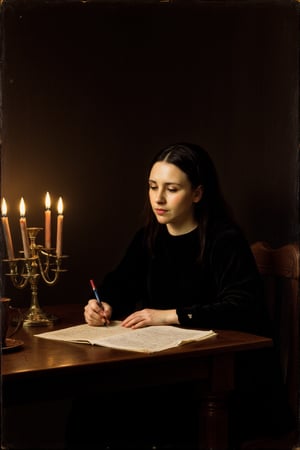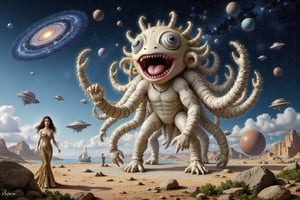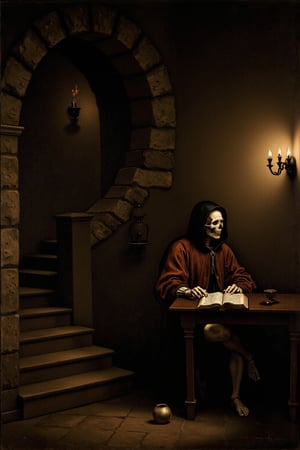This lora specializes in realistic classical art styles from the 17th to 19th centuries. It was trained on a carefully curated and captioned dataset with masters like Rembrandt, Bouguereau, Vermeer, and others.
It is perfect for creating museum-worthy portraits, historical scenes, and artistic compositions straight from the golden eras of painting.
To set FLUX in the right mood start your prompt with: Oil painting
I made some prompt add-ons if you want to go for a certain artist. Add them to the end of your prompt. For example a prompt in Bouguereau-style:
Oil painting. A young girl sitting in a garden, her face illuminated by soft morning light. 19th century. Smooth and highly refined brush strokes. Meticulous technique, aiming for a flawless which enhances the realism. The composition is classical and balanced, serene and harmonious, with a strong focus on beauty and idealized forms. Soft, delicate colors, dominated by flesh tones and pastels, with subtle gradations. Light and shadow emphasizes the smoothness of skin, giving the subject a lifelike quality.
William-Adolphe Bouguereau:
19th century. Smooth and highly refined brush strokes. Meticulous technique, aiming for a flawless which enhances the realism. The composition is classical and balanced, serene and harmonious, with a strong focus on beauty and idealized forms. Soft, delicate colors, dominated by flesh tones and pastels, with subtle gradations. Light and shadow emphasizes the smoothness of skin, giving the subject a lifelike quality.
Rembrandt:
17th century. Thick, expressive, and textured brushstrokes often using impasto in focal points. The composition is centralized, with a focus on dramatic lighting using chiaroscuro. Arrangements lead the eye toward the most illuminated figures or objects. The palette is muted earth tones, heavy on browns, ochres, and deep reds, contrasted with strong light and shadow.
Vermeer:
17th century. Smooth, almost invisible brushstrokes with a meticulous attention to fine details, especially in fabrics and interiors. The composition is balanced and serene, often geometric precision. Soft, luminous colors—rich blues, yellows, and whites. The light is masterly painted, creating an almost photographic realism.
Caravaggio:
16th century. Tight, controlled brushstrokes with dramatic realism. Paint application is smooth, and edges are sharply defined, especially around figures. The composition is dynamic and theatrical, often using foreshortening and off-center placement to create tension. Strong use of chiaroscuro emphasizes the central action. There are stark contrasts between deep blacks and rich, warm tones such as reds, browns and ochres, punctuated by bright highlights of flesh and fabric.
John Singer Sargent:
19th century. Use loose and fluid brushstrokes in non-focal areas, but with great precision in faces and hands. Painterly approach with confident, broad strokes. Composition is informal, with figures arranged in natural poses, creating a sense of spontaneity. Use a palette which has natural, realistic tones with a focus on capturing light. Soft colors which shift to vibrant hues when emphasizing specific elements like fabrics.
Peter Paul Rubens:
16th century. Use brushstrokes which are energetic, with flowing, curvaceous lines. There are layers of glaze to achieve a rich, polished surface and vibrant flesh tones. The composition is dramatic and dynamic, with complex, intertwined figures in motion. There is movement and the painting feels alive and active. Use a palette with warm, rich tones dominated by reds, flesh colors, and golds, with contrasting cool blues and greens. The colors are lush and saturated.
Diego Velázquez:
17th century. Use loose, natural, and seemingly effortless brushstrokes in a mix of broad strokes and fine detailing to achieve a sense of realism without overworking the surface. The composition is subtle and balanced, with understated yet powerful groupings of figures. The composition appears spontaneous yet is highly calculated. Use a palette with earthy and neutral colors, with a range of grays, browns, and muted greens, balanced by occasional flashes of red, white, and gold.
Please add more in the comments. :)






